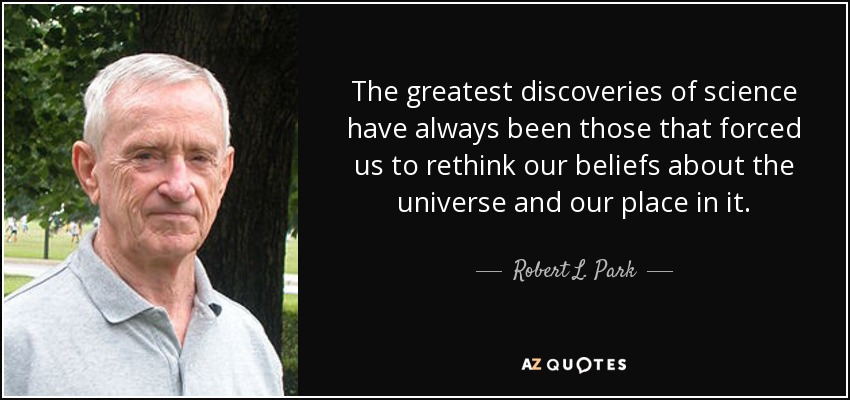Robert Parks book, Superstition:
Belief in the Age of Science was published in 2008, in order to place
people’s beliefs and superstitions under a microscope scientifically. The
reason behind Park’s writing of this book stems from an incident that he had when
he was crushed by a tree and should have died, but somehow was able to
survive. Park had to decide whether it
was a higher power that saved him because it was his destiny, or the new
scientific and technological advances at the time had saved his life. His near death experience lead him to write
Superstition: Belief in the Age of
Science, which takes everyday “beliefs” such as healing through prayer, the
human soul, the suffering of the innocent, a belief in evil, etc. and debunks
them with scientific reasoning. The overarching goal of Park’s book is to
solidify that people’s superstitions can be justified through scientific
reasoning.
My favorite
section of the book was Chapter 3 titled “Miracle at Columbia”. In this chapter
Park discusses the idea of prayer and its theoretical healing powers. Park does agree that prayer and meditation can
have the power to alleviate stress, however; he disagrees with the fact that it
can cure illnesses. Park explains how prayer is like a placebo, in life our
bodies can heal them selves, bones knit together, antibodies fight viruses’
etc.; however, people whom pray for better health believe that it is the prayer
making them better. A study also showed that those who pray regularly are
convinced it helps them in the long run.
Chapter 3
also goes into a study done by Francis Galton in 1872 titled “Statistical
inquiries into the efficiency of prayer” This study was able to prove that
there is no evidence that links prayer to healing powers and the longevity of
life. The study was conducted through the Anglican Church, whom calls for daily
prayer for the longevity of the lives of the bishops, monarchs etc. Being possibly the most prayed for people in
England there would certainly be a significant increase in the life span of
these gentlemen, however, the data showed they lived just as long as everyone
else.
With
relation to the class lectures, the idea of prayers healing powers falls under the
first power point presentation, which is about different ways of thinking. I
believe that the healing power of pray likely falls under pseudoscience, or the
belief that prayer is being based on scientific method. Prayer truly is based
off of the ancient wisdom from the bible. For generations now there has been
limited scientific research into prayer and its actual effect if any.
Pseudoscience uses fast thinking and heuristics, and that is in my opinion what
prayer and religion is. There is no scientific proof that God exists, just as
there is now way to prove prayer can scientifically help cure illnesses.
This book
is highly relatable to the world around us. From the debate on science vs.
religion and the topics of prayer, plan b, natural disasters, and the soul, Superstition: Belief in the Age of Science reaches
out to all readers and shows them that not everything is a “miracle” that
happens by chance. Readers can use the knowledge-learned form this book to look
into everyday scenarios and be able to justify a true scientific reason behind
a situation rather than believing in an unrealistic power. After all, just as
the last line of the books states “Science is the only way of knowing
everything else is just superstition”.
Video below shows why some doctors believe prayer can truly heal illnesses.






No comments:
Post a Comment